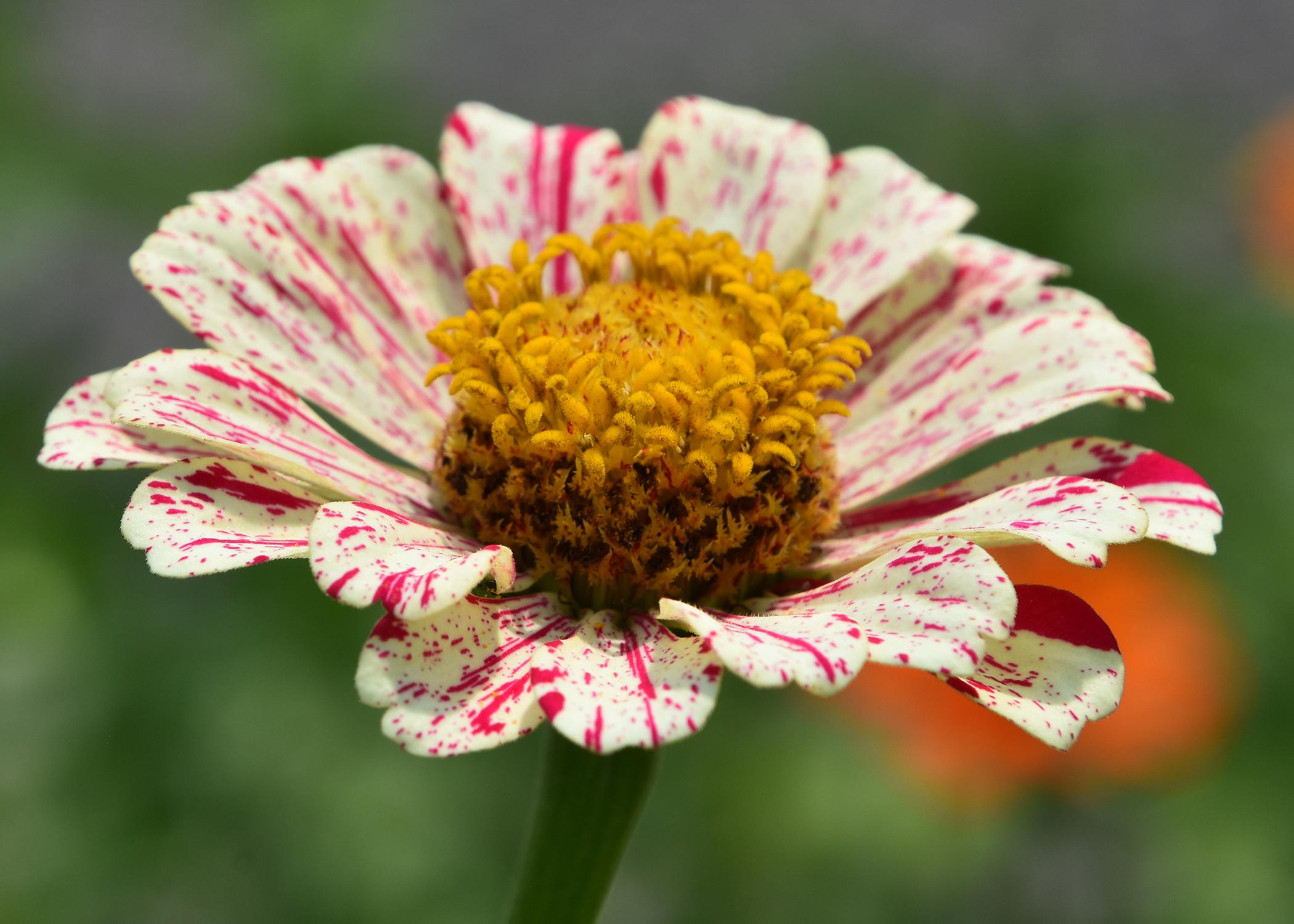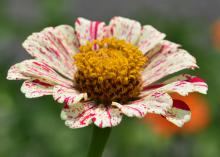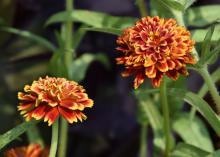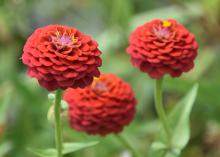Information Possibly Outdated
The information presented on this page was originally released on August 2, 2021. It may not be outdated, but please search our site for more current information. If you plan to quote or reference this information in a publication, please check with the Extension specialist or author before proceeding.
Tough zinnias deserve spot in summer gardens
This summer has been one of the toughest I’ve experienced in all my years in horticulture.
The heat and humidity have taken a toll on our garden and landscape plants, as well as the gardeners. I’m getting older, and I’m wilting a lot faster than in the past.
But one part of my home garden has been stellar in these harsh conditions -- the small piece of ground between my sidewalk and the street. This area is affectionally called the Hell Strip, especially considering the heat we have this year.
In past years, I’ve grown a variety of plants in this spot, from wheat to ornamental sweet potato. This year, I decided to change the theme of my Hell Strip and have grown a variety of zinnias.
Zinnias are annual flowers that perform extremely well in our hot and humid Mississippi gardens and landscape. Home gardeners can have these beautiful flowers blooming from May all the way through to frost in fall.
Another plus for growing zinnias in the heat of the summer is that they require little in terms of maintenance, just consistent fertilization and moisture. Thank goodness for my irrigation system during this hot summer.
Of course, I’m growing a couple of my favorite selections, which are the Benary Giants and Magellans, which produce huge, pom-pom-like flowers about the size of a baseball.
I’m also growing some varieties that are new to my garden.
One I really like is the heirloom Raggedy Anne cactus-flowered zinnia. It produces flowers up to 5 inches in diameter. Flowers consist of narrow, curved and twisted petals resembling fancy chrysanthemums. Some of the plants in my Hell Strip are almost 4 feet tall.
Another interesting selection that I’ve fallen in love with is the Peppermint Stick zinnia. These plants display semidouble to fully double flowers with random, thin red striping that has that familiar peppermint candy look.
I’m also growing some smaller zinnia selections to fill in the planting bed. Persian Carpet is a blend of warm colors like yellow, red and orangy-brown and remind me of the color palette of French marigolds.
Mini-Zini is a mix of four different small compact varieties: Thumbelina, Button Box, Pumila and Lilliput. I like the random planting that results from mixing these varieties. They produce an abundance of double and semidouble flowers in a wide color range.
All zinnia selections benefit from deadheading the fading flowers. This isn’t a problem for the larger flowering selections, because I like bringing in fresh-cut flowers and displaying them in nice vases. The constant cutting encourages more flower production.
The smaller-flowered varieties keep producing flowers and don’t seem to need as much deadheading. I just trim these plants to keep them looking tidy.
One final word: Zinnias are really easy to grow from seed. In fact, that is exactly what I’m doing this summer. I’ve been succession planting and sowing seed about once a month and adding to the gorgeous zinnia flower display.
Since most zinnias begin flowering about 60 days after sowing, there is still time to get one more group ready to plant this year.






